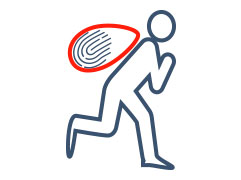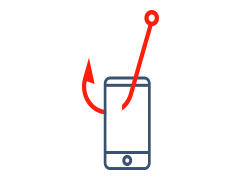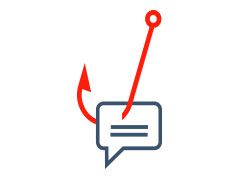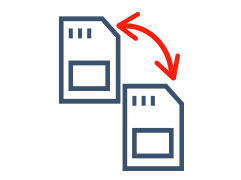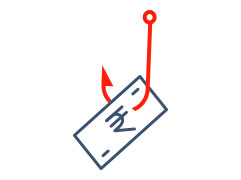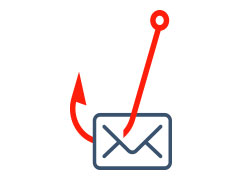You've Been Logged Out
For security reasons, we have logged you out of HDFC Bank NetBanking. We do this when you refresh/move back on the browser on any NetBanking page.
OK- Home
- PAY Cards, Bill Pay
- Money Transfer
- To Other Account
- To Own Account
- UPI (Instant Mobile Money Transfer)
- IMPS (Immediate Payment 24 * 7)
- RTGS (Available 24 * 7)
- NEFT (Available 24 * 7)
- RemitNow Foreign Outward Remittance
- Remittance (International Money Transfers )
- Religious Offering's & Donation
- Visa CardPay
- RemitNow (For Expat)
- Forex Services for students
- Pay your overseas education fees with Flywire
- ESOP Remittances
- Cards
- Bill Payments
- Recharge
- Payment Solutions
- Money Transfer
- SAVE Accounts, Deposits
- INVEST Bonds, Mutual Funds
- BORROW Loans, EMI
- INSURE Cover, Protect
- OFFERS Offers, Discounts
- My Mailbox
- My Profile
Welcome!
✕
✕
- Home
- PAY Cards, Bill Pay
- Money Transfer
- To Other Account
- To Own Account
- UPI (Instant Mobile Money Transfer)
- IMPS (Immediate Payment 24 * 7)
- RTGS (Available 24 * 7)
- NEFT (Available 24 * 7)
- RemitNow Foreign Outward Remittance
- Remittance (International Money Transfers )
- Religious Offering's & Donation
- Visa CardPay
- RemitNow (For Expat)
- Forex Services for students
- Pay your overseas education fees with Flywire
- ESOP Remittances
- Cards
- Bill Payments
- Recharge
- Payment Solutions
- Money Transfer
- SAVE Accounts, Deposits
- INVEST Bonds, Mutual Funds
- BORROW Loans, EMI
- INSURE Cover, Protect
- OFFERS Offers, Discounts
- My Mailbox
- My Profile
- Home
- PAY Cards, Bill Pay

- Money Transfer
- To Other Account
- To Own Account
- UPI (Instant Mobile Money Transfer)
- IMPS (Immediate Payment 24 * 7)
- RTGS (Available 24 * 7)
- NEFT (Available 24 * 7)
- RemitNow Foreign Outward Remittance
- Remittance (International Money Transfers )
- Religious Offering's & Donation
- Visa CardPay
- RemitNow (For Expat)
- Forex Services for students
- Pay your overseas education fees with Flywire
- ESOP Remittances
- SAVE Accounts, Deposits
- INVEST Bonds, Mutual Funds
- BORROW Loans, EMI
- INSURE Cover, Protect
- OFFERS Offers, Discounts
- My Mailbox
- My Profile
- Personal
- Useful Links
- ThisPageDoesNotCntainIconSecurity
- Beware Of Fraud
false
false
false
true
false
false
- List of third parties engaged by Bank
- SmartWealth terms and conditions
- New Issuance
- Privacy
- Quick Money - Top-Up on Car Loan
- Jaldi Five - Top-Up on Car Loan
- Car Loan BT Top-Up Calculator
- Pre-Approved Car Loan
-
Important Messages
- DC Upgrade Is Underway
- Important Branch Banking Notices
- Cheques Will Clear in Hours
- IEPF Authority
- Garv Pension Saving Account - Disclaimer
- OS Update
- Auction Notice Gold Loan
- ThisPageDoesNotContainIcon RACSD QR
- Notice And Request For Consent Other Products
- Notice And Request For Consent Loan
- Link pan with fastag wallet
- NB MB Block FAQs
- Travel Insurance
- Cyber Insurances
- Health Insurances
- used car events
- Penal Charges for Construction Finance
- Third Party Vendor
- Penal Charges ECG
- Penal charges for the Corporate banking segment
- Penal Charges
- RBI Integrated Ombudsman Scheme
- BO contact details
- Service Charges
- Receive OTP on your Add-On Credit Cardholder mobile number Now
- upi scheduled maintenance intimation
- Bill Payment Services with HDFC Bank
- HDFC Bank MobileBanking App
- newhdfcbankapp
- HDFC Bank MobileBanking App-test
- All-New HDFC Bank App and NetBanking
- Terms and Conditions
- Benefits of Auto Renewal of Fixed Deposits
- Auto Renewal of Fixed Deposits Faqs
- ABSLI Grace
- Important Notification for POS rental UPI
- hybrid corporate salary account journey
- Important information on Overdraft Facility-Advances against Non-withdrawable Fixed Deposit
- Fund transfer to HDFC bank account
- ABSLI PreDue
- All in One PoS Interest Acknowledgement
- Reporting of suspicious fraudulent communication
- ABSLI Lapse
- Disclaimer for HLIC SI Standing Instructions
- Message from Chairman and MD & CEO
- Important information regarding your HDFC Bank Fixed Deposit Account
- changes in premature withdrawal terms and conditions
- Complete your Re-KYC
- Corporate Salary - Voucher Offer
- Corporate Salary Upgrade Offer
- Disclaimer for HLIC Renewal Pre-due
- Disclaimer for distribution of Life Insurance
- Disclaimer for HLIC Renewal Lapse
- Disclaimer for HLIC Renewal Grace
- Withdrawal of ₹2000 Denomination Banknotes
- Code of Conduct for Direct Selling Agents
- revision-charges-fees-structure-car-loan
- ThisPageDoesNotContainIcon OfflinePay
- load-time-library-injections-smartwealthapp
- screen-recording-ios-smartwealthapp
- screenshot-ios-smartwealthapp
- repackaging-ios-smartwealthapp
- jailbreak-ios-smartwealthapp
- adb-enabled-smartwealthapp
- rooting-smartwealthapp
- Revision in Institutional Savings & Current Account Fees and Service Charges
- corporate salary account
- Vigil Aunty
- ThisPageDoesNotContainIcon Set up your 4-digit log-in PIN on your MobileBanking App
- ThisPageDoesNotContainIcon PASA HLIC Sanchay Par Disclaimer
- ThisPageDoesNotContainIcon Tata AIA Life Insurance Fortune Guarantee Plus Disclaimer
- ThisPageDoesNotContainIcon ABSLI Insurance Awareness Day (NAP PASA)
- ThisPageDoesNotContainIcon HDFC LIFE Sanchay Par Advantage Whatsapp Disclaimer
- ThisPageDoesNotContainIcon Tata AIA Life Insurance SRS Vitality Protect Disclaimer
- ThisPageDoesNotContainIcon Tata AIA SRS Vitality Protect Disclaimer
- ThisPageDoesNotContainIcon TATA Insta PASA CP Disclaimer
- ThisPageDoesNotContainIcon HDFC Life Insta PASA Disclaimer
- ThisPageDoesNotContainIcon HLIC Insta PASA Disclaimer
- ThisPageDoesNotContainIcon WhatsApp Campaign
- ThisPageDoesNotContainIcon ABSLI PASA T&C
- ThisPageDoesNotContainIcon ABSLI AutoPay
- ThisPageDoesNotContainIcon TATA AIA SRS WhatsApp Campaign
- ThisPageDoesNotContainIcon Two Wheeler Loans Revised Charges
- ThisPageDoesNotContainIcon PASA TATA AIA Fortune Guarantee Plus WA disclaimer
- ThisPageDoesNotContainIcon RASP click here
- ThisPageDoesNotContainIcon Change in Unlimited Free ATM
- ThisPageDoesNotContainIcon Secure Usage Guidelines - NetBanking
- ThisPageDoesNotContainIcon Secure Usage Guidelines - Mobile Banking
- Digital Experience Center mailer 2
- Digital Experience Center Mailer Jan
- Digital Experience Center
- Digital Experience Center mailer
- UPI Registration T&C
- ABSLI PASA Net Banking
- Stop Payment of Cheque(s)
- DC hotlisting journey
- Cyber insurance
- Form 15 GH
- Cheque Book Request
- Nomination Updation
- Debit Card Instant PIN Re-generation
- millennial-post-bounce
- Notice for HDFC Bank SmartHub Merchants
- Security Threat Detected
- How to turn on notification
- Protection from Hooking frameworks-IOS
- Root Detection
- Jailbroken detection
- Protection Hooking Frameworks
- Protection from hooking frameworks smartwealthapp
- protection-from-hooking-frameworks-ios-smartwealthapp
- java-debugger-protection-smartwealthapp
- screen-cast-protection-smartwealthapp
- smartwealthapp-workspace
- smartwealthapp-virtualspace
- smartwealthapp-developeroption
- smartwealthapp-trustedkeyboard
- smartwealthapp-trustedscreenreader
- smartwealthapp-tapjacking
- Java Debugger Protection
- MB App Upgrade
- Thank You for Your Response
- Thank You for Your Response Mobile Banking
- Your Upgrade is Underway
- Screen Mirroring / Screen Cast Protection
- payment-reminder-pre-bounce
- HDFC Life Saral Jeevan Bima
- Disclaimer - Autopay Banner
- Disclaimer - Renewal Banner
- Scheduled Maintenance Intimation
- Cards Scheduled Downtime Intimation
- Important Update regarding NetBanking Login Page
- ThisPageDoesNotCntainIcon moblieTesting
- ThisPageDoesNotContainIcon Promotional Cashback Points
- EMI Offer Hosting | Merchant Information
- Important Update for SmartHub Vyapar Merchants
- Net Banking FAQ
- T&C Voucher- LE
- T&C Voucher-UPG
- amalgamation of public sector bank
- Paytm Downgrade Business Card
- Paytm Downgrade Consumer Card
- Revision in TCS on LRS Transactions
- HDFC Bank App FAQ
- ThisPageDoesNotContainIcon Insta Savings Offer T&C Hosting
- ThisPageDoesNotContainIcon CashBack Points
- ThisPageDoesNotContainIcon PhoneBanking numbers
- ThisPageDoesNotContainIcon Auto Debit Instruction for Credit Card Payments
- ThisPageDoesNotContainIcon 4 Digit Log-in PIN Registration Offer | June'22
- ThisPageDoesNotContainIcon Tata AIA Life Insurance
- ThisPageDoesNotContainIcon PAN Aadhaar linking
- ThisPageDoesNotContainIcon CBX Mobile App - Terms and Condition
- ThisPageDoesNotContainIcon IMPORTANT update from RBI on Amalgamation of Public Sector Banks
- RBI Kehta Hai
- Quick Links
- ThisPageDoesNotCntainIcon Citizen's Charter
- Credit Card Application Form
- Login to NetBanking
- HDFC Bank MyCards
-
ThisPageDoesNotCntainIcon
Terms & Conditions
- ThisPageDoesNotCntainIcon Corporate Salary - Times Prime Annual Membership Offer
- PayZapp Terms and Conditions
- terms-and-conditions-for-cbdc
- MobileBanking App activation campaign
- Draft Customer Terms and Conditions
- Draft Merchant Terms and Conditions
- Our Policy details
- Disclaimer Service Mailers1
- FCRA Amendments
- FCRA account status
- TnC Foreign Outward Remittance
- ThisPageDoesNotCntainIcon HDFC Bank – Happiness Day Event
- ThisPageDoesNotCntainIcon Website Usage Terms
- ThisDoesNotContainIcon Sitemap
- ThisPageDoesNotCntainIcon Security
- ThisPageDoesNotCntainIcon US Patriot Act Certificate
- Custom Duty Payment
- ThisPageDoesNotCntainIcon Our Corporate commitment
- HDFC Bank Venture Capital
- HDFC Bank Co-LAB
- WhatsApp Banking
- About Merger
- Wolfsberg AML Questionnaire
- RBI UDGAM-Unclaimed Deposit
- Deceased Depositors Policy along with Nomination Rules
- Cheque Collection Policy
- Fair Practices Code for Lenders
- Code for Collection of Dues and Repossession of Security
- Code of Conduct for Direct Selling Agents
- 1+1 Credit Card Application

Beware Of Fraud
Know how you can protect yourself from fraud .The best way to keep yourself protected against fraud is to stay vigilant.
Here’s a list of the different kinds of frauds and scams, and how to identify and protect yourself from them.
Identity Theft
Protect yourself against ID theft
true
Vishing
Don’t fall for this phone call ruse
true
Smishing
Avoid this SMS-based scam
true
SIM Swap
When fraudsters steal your phone number
true
Money Mule
How fraudsters can get you to launder money
true
Phishing
Email fraud to get at your personal information
 Verify the URL of the webpage. Check if the website address contains ‘https://’, which means your communication with the site is secure
Verify the URL of the webpage. Check if the website address contains ‘https://’, which means your communication with the site is secure Check the padlock symbol. This depicts the existence of a security certificate, also called the digital certificate for that website.
Check the padlock symbol. This depicts the existence of a security certificate, also called the digital certificate for that website. Establish the authenticity of the website by verifying its digital certificate
Establish the authenticity of the website by verifying its digital certificate
true
Trojan
Keep this harmful software at bay
true
